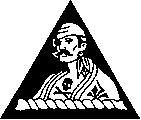

|
This was a radar search for enemy shipping mission involving 5 planes from the 6th Bomb Group:
|
|---|
B-29 Gunners Sink Two ShipsArthur Clay, an aircraft commander with the 39th BS, 6th BG on Tinian Island, recalls a run-in with two Japanese surface ships during a Navy assist in a air-sea rescue operation north of Iwo Jima: "With no mission scheduled for that morning of February 14, 1945, I was stripped down to my underwear and getting in a little sack time, when the PA horn blared out, 'Gus Clay, report to operations immediately.' I jumped up, slipped on my clothes and shoes, and, wondering what the heck was up, took off up the street to find out. "'Get your crew together,' I was told. 'You are to go on an individual plane search mission north of Iwo Jima, compliments of the Navy.' A Navy lieutenant was to go up with us. Iwo Jima was still in the Japs' hands, and though the mission could be risky for a single B-29 in that area, we accepted the assignment with enthusiasm. "The Navy had requested assistance for the radar search mission since the area they wanted covered was out of range of the Navy B-24s. The Iwo Jima invasion was coming up soon-thus, the surveillance north of Iwo. "We made out turn-around at the designated spot, and headed for our base at Tinian Island. The weather, by this time, was getting pretty bad, so I dropped down to about 1,000ft above the water to get under the heavy clouds, when all of a sudden we faced two Jap surface ships dead ahead. They evidently were en route to Iwo Jima. Our Navy observer identified one of the ships as a 7,000-ton freighter, and the other as a 2,500-foot freighter. We contacted one of our submarines we knew to be in the area, who assisted in the rescue of B-29 flyers forced to ditch, to or from bombing missions over Japan. "Since we had no bombs aboard, I had not even considered trying to 'attack' the ships, and was about to take evasive action to get out of their way, when the ships started firing at us. Turn about was fair play, I thought, so I immediately notified the gunners we were to strafe them. After climbing to about 2,000ft, I turned and made a diving sweep on the larger ship, with our forward guns blazing and the tail gunner taking over after we passed over the ship. Bingo! As we made our turn for another run, we could see explosions on the ship and encouraged by the first pass, we turned on the small freighter. It, too, became embroiled in flames. We circled and watched as the larger ship began to sink, as did the second ship. After circling the two stricken ships to make sure they were sinking, we relayed the message to the submarine, explaining to the sub commander that their services were not needed. If I had thought to be more romantic, I'd probably have sent this message: 'Sighted two ships, sank same!'" [from Chester Marshall, "B-29 Superfortress" (1993), p. 75] |
20th AF Mission 33
|